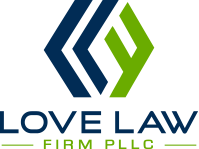
When we want to start a business, so many of us first focus on what we’re going to call it. Will it be “Pita Pan,” “Planet of the Grapes Wines & Liquors,” “Curl Up and Dye Hair Salon?” And while a clever name is a wonderful thing – and certainly helps branding and name recognition – it isn’t the only thing.
Let’s start with understanding the various forms of legal entities:

1 - Sole Proprietorship
Basically, this is someone running a business without an entity. You are your business; there is no separation – at least no legal one. The advantage of this model is that anyone can start a business easily. You simply decide you’re starting a business and – voila! – you are. Here in New York, you will need to file a “Doing Business As” (DBA) form with your local county government. That way they know that “Jean-Claude Van Man” is run by Stuart Whitmore.
Anything you earn is taxed as your personal earnings and there is no protection for your assets against any liabilities incurred by your business. Other than county registration, there are no entity filing requirements. You do need to be aware of business permits, trade licenses and potential zoning approvals necessary for either your line or location of work, however. Essentially, you can order business cards and start immediately. Many “hobby businesses” and “vanity projects” are done in exactly this manner.
.png)
2 -Partnership
This is like the Sole Proprietorship but you have at least one other person in business with you.
However, this brings a significant additional risk: once you form a general partnership, you have at least one other person who can bind you to decisions they make and put you at risk – including being solely responsible for all the partnership’s debts. (Please note: this risk is not true for a Limited Partnership or a Limited Liability Partnership.)
Like a Sole Proprietorship, income passes through to the individuals who formed the partnership for tax purposes. Here in New York, you will need to file a “Doing Business As” (DBA) form with your local county government. That way they know that “Ditcher, Quick & Hyde” is a family law practice run by Tom Ditcher, Mark Quick and John Hyde. Other than county registration, there are no entity filing requirements. And like a sole proprietorship, you do need to be aware of business permits, trade licenses and potential zoning approvals necessary for either your line or location of work, as well. Of course, no partnership should ever operate without a partnership agreement, though many do – often leading to disaster.
You will also need to obtain an Employer Identification Number (EIN) from the Internal Revenue Service.
With very few exceptions, I steer my clients away from the sole proprietorship and partnership models.
Let’s look at the better foundations for your business:
.png)
3 - Corporation / Professional Corporation
Corporations are the most prevalent form of entity in use in the United States and here in New York.
When you form a corporation, you create a new legal entity in which the risks and rewards of the business will be held. This means that you protect your personal assets in case of business loss. It also means that (unless you create what is known as a “subchapter-S” corporation) the profits of the company stay at that level, and the company itself is taxed on its income. You, your attorney and your accountant should discuss what the best model is for you from a tax liability perspective.
The subchapter-S election is very common among small business owners. It does however have a few restrictions that entrepreneurs need to be aware of: 1) ownership is limited to one hundred shareholders, 2) shareholders must be individuals or certain trusts and estates – and cannot be partnerships, corporations, or non-resident aliens, and 3) the corporation may only issue one class of stock. But once you have a subchapter-S corporation you can deduct business losses from your personal tax return, including using business losses as deductions from non-business income, thus providing savings on self-employment or Social Security/Medicare tax.
That doesn’t mean that corporations don’t have significant advantages as well. A corporation can elect to hold and accumulate earnings (subject, of course, to some limits) over a period of years, which a subchapter-S cannot do. In addition, a corporation can have multiple classes of stock, attracting potential investors who can potentially receive differential dividend payments.
You form a corporation in New York by filing the Articles of Incorporation with the New York Secretary of State. Once approved, you hold your first organizational meeting and implement By-Laws (a set of rules of the road by which the company will operate), name a registered agent (someone who can accept service of process on your behalf), appoint directors and officers, issue shares, and authorize the acquisition of a bank account in the corporation’s name. You will need to maintain corporate books and records going-forward to demonstrate to banks, auditors and other future investors that you are managing the corporation professionally and properly.
You will need to obtain an Employer Identification Number (EIN) from the Internal Revenue Service. If you want to operate as a subchapter-S corporation, you will need to file a Federal form 2553 (subchapter-S election by a small business) and a New York State form CT-6 (election by a federal subchapter-S corporation to be treated as a New York subchapter-S corporation.
Certain businesses also require business permits, trade licenses and potential zoning approvals.
There is a biennial filing requirement for corporations with New York state, and certain information is public. Every two years, corporations in New York are required to file this form that sets forth: 1) the name and business address of the CEO of the entity; 2) the street address of its principal office; and 3) the address to which the New York State Secretary of State should send copies of service of process (that is, lawsuits) that is accepts on your behalf.
There are no limits on the number of potential shareholders/investors (unless it’s a subchapter S entity as discussed above) which makes it easier if you need to raise additional capital later through the sale of stock.
Certain professions are required to form either a PC (Professional Corporation) or a PLLC (Professional Limited Liability Company) when creating an entity, such as accountants, attorneys, doctors, engineers and the like. The list of professions that are required to do so are found on the New York Education Department’s Office of the Professions website. PCs can only be owned by members of that particular profession and a certificate of good standing or authorization is required before the entity will be recognized or formed by the state.
A PC doesn’t protect the owner’s personal assets from professional malpractice claims, however. This is why every professional should carry professional liability insurance.
The formation of a corporation isn’t complete simply by the filing of the Articles of Incorporation, however. In order to be valid, a corporation must also: 1) appoint a board of directors, 2) appoint officers, 3) adopt By-Laws, and 4) obtain an EIN. If there is more than one business owner, I always recommend that a Shareholder’s Agreement be put in place as well.
.png)
4 - Limited Liability Company / Professional Limited Liability Company
A Limited Liability Company (LLC) has a lot to offer an entrepreneur: limited liability so that your personal assets are protected from business risks; and an option as to how to tax the income (either as personal earnings, or to be treated as a corporation). It also gives greater management flexibility, rather than the stricter protocol of corporations that require management by a board of directors and certain corporate officers. Member management is a more fluid arrangement.
To form an LLC in New York, you follow a two stage process. First, you file the Articles of Organization with the state (in those you can appoint a Registered Agent, as discussed above). Then, within 120 days of your LLC being formed by the state, you must publish notices related to its formation in two newspapers. Those newspapers are selected by the county clerk of the county in which you are organized. The notices are to run on a set schedule for a certain period of time and then a Certificate of Publication must be filed with the state, along with affidavits of publication from the two newspapers, in order to finalize your entity’s formation. It is important to note, however, that your LLC is recognized by the state as of the date the Articles of Organization are filed, there is nota waiting period until the publication is completed.
Unlike other states, New York requires an Operating Agreement to be put in place within an LLC. An Operating Agreement is what it sounds like – an agreement by the members of the LLC as to how business will be conducted, essentially it is the Bylaws of the LLC as well as a Shareholders’ Agreement rolled into one. New York also recognizes the power of any member of an LLC to bind the business to contractual decisions. If the LLC is formed with multiple members, the Operating Agreement should designate a Managing Member or Members who are authorized to obligate the company, so that other owners under how the company will operate.
Certain businesses also require business permits, trade licenses and potential zoning approvals.
If your LLC is treated as a partnership or disregarded entity for income tax purposes, you are required to file an annual New York State filing fee (Form IT-204-LL). The amount of the fee is based on the level of income derived from New York sources in the prior year.
Like a corporation, an LLC has to file a biennial statement with the New York State Secretary of State, but the filing is limited to the address to which service of process should be mailed.
In New York, the ten largest percentage owners of an LLC are each personally liable for total of unpaid wages to employees. This liability cannot be thwarted in the Operating Agreement. Insurance coverage can be considered to address this wage and hour risk, but that coverage is not widely offered, tends to have a very high deductible, and is expensive.
The LLC has less flexibility if you want others to contribute capital to the business (meaning, adding members to an LLC is more cumbersome than issuing shares in a corporation). Like the PC, certain professions are required to form a PLLC when forming an entity (again, accountants, attorneys, doctors, engineers) and only other members of that profession are eligible to be co-owners.
A PLLC doesn’t protect the owner’s personal assets from professional malpractice claims, however. This is why every professional should carry professional liability insurance.
Conclusion
As you can see, there are a lot of options and considerations when protecting your personal assets and forming an entity. Here at LOVE LAW FIRM we love working with new entrepreneurs and helping guide them through these decisions and launch a successful business. Call us to learn more about how we could help your business succeed!
If you liked this article, check these out as well:
LLC vs. S-Corp - Which is better for your New York Business?
What is Limited Liability and Why is it Important?


